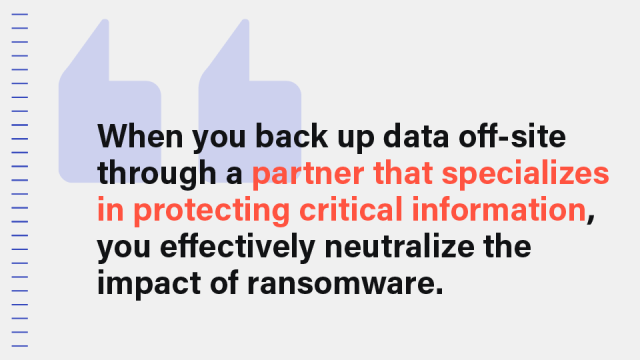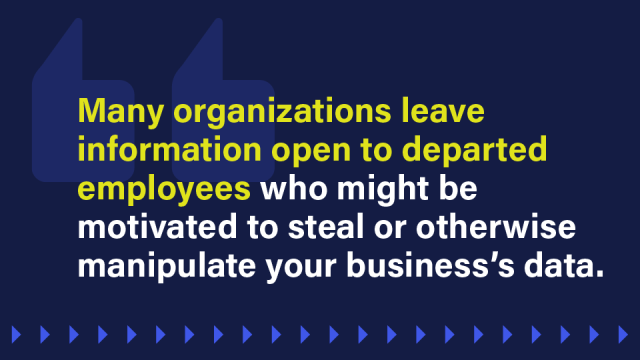There is a complex, relentless battle being fought every day. While you focus on running your business, IT security experts are quietly blocking thousands of cyberattacks targeting your data. Small businesses are not immune to these attacks—in fact, they’re prime targets for data thieves.
But it’s not all bad news. Based on frontline expertise from cybersecurity professionals, this post reveals the five most prevalent cybersecurity threats facing small businesses today—plus five actionable steps to help defend your organization from cybercriminals.
Table of Contents
- 1. Constant Cyberattack Attempts
- 2. Sophisticated Cybercrime-as-a-Service
- 3. Convincing Phishing Scams
- 4. Multifactor Authentication Fatigue
- 5. Small Business Targeting
- Action Plan: 5 Steps to Protect Your Business
5 Cybersecurity Threats Businesses Face Daily
1. Constant Cyberattack Attempts
The Problem: Your business is under continuous attack, whether you realize it or not. Security providers block millions of malicious connections daily and filter out thousands of phishing or malware emails. Even for a small business, this could translate to thousands of attack attempts daily.
The Reality: 74% of all data breaches include the human element, usually someone in an organization clicking on a malicious link. All it takes is one successful attack to compromise your company’s data and your clients’ sensitive information.
2. Sophisticated Cybercrime-as-a-Service
The Problem: Cybercrime has evolved from amateur hackers to sophisticated service providers. Professional criminals now offer “Phishing-as-a-Service” and “Malware-as-a-Service” platforms, complete with technical support and marketing operations.
The Reality: These services make it easier than ever for attackers to target your business with professional-grade tools that are harder to detect.
“Cybercriminals used to make simple mistakes, but now there’s phishing-as-a-service and malware-as-a-service. You’re at the will of a lot more bad actors.” Brian Rae, Senior Director of Security and Compliance, Rightworks
3. Convincing Phishing Scams
The Problem: Today’s phishing emails are highly convincing, often appearing as legitimate business inquiries or communications from trusted sources.
Common tactics include:
- Impersonating potential new clients
- Spoofing emails from a new hire’s CEO or boss
- Creating perfect replicas of legitimate documents or communications
The Reality: These sophisticated attacks bypass traditional security measures because they target human psychology rather than technical vulnerabilities.
One security expert describes a typical scenario:
“An accountant receives an email that says, ‘I’m looking for a new accountant.’ The firm responds. The attacker asks for a secure place to send last year’s tax documents. The firm says send to a portal. That cyber attacker then uploads malware into the portal.”
4. Multifactor Authentication Fatigue
The Problem: While multifactor authentication (MFA) is essential, its effectiveness is compromised when users approve authentication requests they didn’t initiate—a phenomenon known as “MFA fatigue.”
The Reality: When users automatically approve MFA prompts to stop notification fatigue, they unintentionally grant attackers access to their accounts.
“If you accidentally give your credentials away, there’s a backstop there [with MFA]. But it’s unfortunate behavior by the users [when they approve requests they didn’t initiate].” Brian Rae, Senior Director of Security and Compliance, Rightworks
5. Small Business Targeting
The Problem: Small businesses are frequent targets for cybercriminals because they often lack robust security measures and hold valuable client data. Most small businesses just don’t have the resources to manage cybersecurity:
- 80% of small and medium-sized businesses have no more than one employee dedicated to security.
- 47% of small business owners believe investing in cybersecurity solutions would be too expensive.
The Reality: The average cost for a small business to recover from a cyberattack ranges from $170,000 to $300,000—enough to permanently damage most small companies. And customers pay attention to cybersecurity issues, too. More than one in five stopped doing business with a company that suffered a data breach.
Free Download → How to Secure Your Small Business from Future Cyberthreats
How to Combat Top Cyberthreats: 5-Step Action Plan
Despite all the scary statistics, there is hope. You can protect your critical data and keep your business safe by following these five essential steps:
1. Prioritize Employee Security Training
According to Verizon’s Data Breach Incident Report, 74% of all data breaches involve the human element. Without a doubt, training your employees about the threats they could face at work is the single best cyberattack prevention tactic.
When setting up your cybersecurity training, don’t forget to—
- Train employees to recognize sophisticated phishing attempts.
- Implement regular security awareness programs (not just one-time training).
- Establish protocols for verifying unusual requests, especially involving financial transactions.
- Conduct simulated phishing tests to identify vulnerable employees.

2. Implement Technical Safeguards
A layered security technology strategy ensures your devices (laptops, workstations, phones, networks) are protected from a variety of threats.
Here’s what experts recommend:
- Deploy multifactor authentication for all accounts that support it.
- Use password managers company-wide to ensure strong, unique passwords.
- Keep all software and systems updated with the latest security patches.
- Install comprehensive email filtering solutions.
- Enable dark web monitoring for company credentials.
- Access software and applications from the cloud.
3. Ensure Your Data Is Backed Up Regularly
Some cyber attackers will hold your data hostage and issue an ultimatum: Pay a hefty sum, and they’ll return your critical information. Even then, some victims don’t get their data back after forking over a ransom.

When you back up data off-site through a partner that specializes in protecting critical information, you effectively neutralize the impact of ransomware. After all, if you can still access your data after a bad actor claims to have stolen it, you don’t need to pay a ransom to get it back.
Familiarize yourself with the 3-2-1 backup rule and the shared responsibility model to ensure your data stays safe and available.
4. Limit Employee Access to Sensitive Information
The issue with which pieces of data employees can and cannot access isn’t so much one of trust. Rather, it’s a pragmatic cybersecurity concern. If a cybercriminal does manage to breach an employee’s account, you can limit the information the attacker has access to by limiting what the employee has access to in the first place.
- Implement the principle of least privilege (i.e., employees only access what they need).
- Create a process for quickly revoking access during offboarding.
- Conduct regular access reviews to identify and remove unnecessary permissions.
- Use role-based access control to standardize permissions.

In one survey, almost half of respondents said they believed former employees and contractors still had access to business data. That’s a potentially dangerous situation for any business.
5. Partner With Cybersecurity Experts
- Consider outsourcing security monitoring to specialized providers.
- Migrate critical applications to secure cloud environments.
- Develop and regularly test an incident response plan.
- Schedule regular security assessments to identify vulnerabilities.
Consider partnering with a company that will back up and protect your critical information around the clock. As much as we wish it wasn’t so, your small business is in the crosshairs of cybercriminals. With the right partner personalizing your cybersecurity, you’ll undoubtedly keep your business’s data safe.
How vulnerable is your small business? Schedule your security risk assessment today.
Stay one step ahead of cybercriminals. Subscribe to our blog for weekly security insights delivered straight to your inbox.

